Forum Replies Created
-
AuthorPosts
-
 Alex PrattParticipant
Alex PrattParticipantAlan,
Here’s an example of a single frame of NGC 884 (Sword Handle, Perseus) from a video taken on 2020 Sep 13 with a Watec 910HX camera on a C11 /f10 with f/3.3 focal reducer. 0.64s integration setting
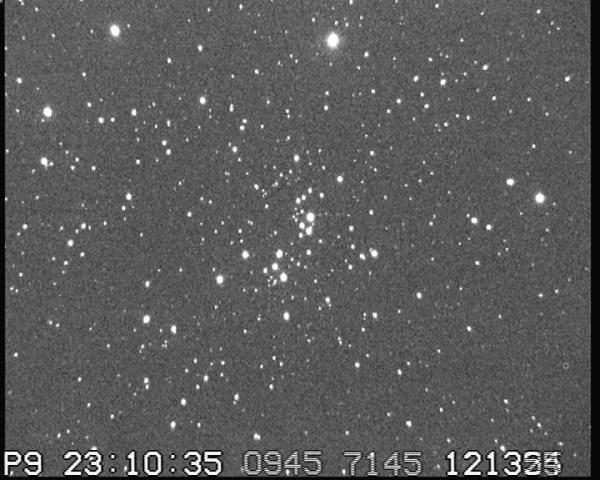
The field is about 30′ across the diagonal and it shows stars to mag. 15.
It’s fun to observe the brighter star clusters in almost real-time, rather than second hand after spending hours taking hundreds of ‘subs’.
Cheers,
Alex.
 Alex PrattParticipant
Alex PrattParticipantHi Alan,
Analogue video cameras, such as the Watec 902H2 Ultimate and the more sensitive Watec 910, give 8-bit output, a brightness range of 256 values. They can measure accuracies to 0.1 mag., such as this light curve of a minimum of the eclipsing binary, RZ Cas
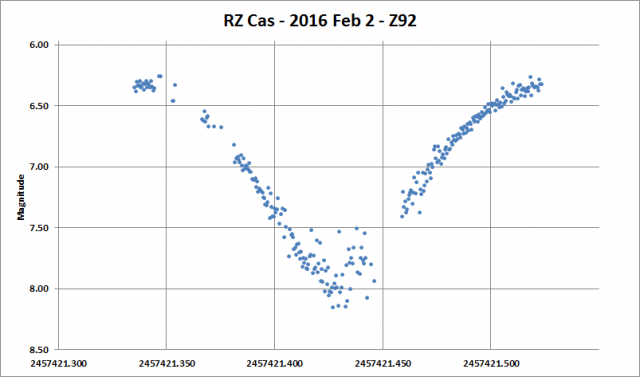
obtained using a Watec 910 camera and an old 50mm f/2 SLR lens. Thin cloud caused the large amount of scatter at minimum. Of course, using a telescope would reach fainter targets.
Video dark frame and flat field recordings can be made and used to calibrate the data.
Members of the Variable Star Section use CCD and CMOS cameras for photometry and produce estimates accurate to 0.01 mag. This is because they are using 12-, 14- or 16-bit sensors, with much larger well depths, supporting a significantly greater range in brightness, giving better accuracy. Exoplanet observers take photometry to an even higher level.
It depends what you want to do. Video photometry is useful for transient events with large magnitude drops and for estimating times of minima of eclipsing binaries, but I suggest looking at the VSS webpages and its Members’ Pages if you wish to do good quality UBVRI photometry.
Cheers,
Alex.
 Alex PrattParticipant
Alex PrattParticipantTim,
Please let us know how you get on. As you well know, we need good pointing accuracy to locate our asteroidal occultation fields. If it does the job it’s a lot quicker than star-drift and much less expensive than buying a bespoke polar gizmo.
I’ll leave you to discuss how many angels can sit in the gap between the reported and the true pole.
Alex.
 Alex PrattParticipant
Alex PrattParticipantNick,
SharpCap’s pola alignment display was giving error values between 8″ and 15″ as I finished tightening my azimuth and elevation locks. This included a correction for the refracted pole at my latitude. The ambient temperature was around 10 C. Of course, tapping and nudging the mount / ‘scope showed how these values could change.
I fully expect it would give different values if I was to test it on a frequent basis. I don’t do long-exposure astrophotography and I’m not chasing professional observatory alignment standards, just content that it’s reasonably well polar aligned and is doing the job of finding my 30′ star fields.
Alex.
 Alex PrattParticipant
Alex PrattParticipantThanks Paul,
‘Radio astronomy’ was a tongue in cheek comment in case anyone despairs of such laser displays becoming more frequent and disrupting our observing programmes.
Cheers,
Alex.
 Alex PrattParticipant
Alex PrattParticipantThanks Robin.
Coming to a city near you… argh!!!
Clear skies – or – how do I take up radio astronomy…?
Alex.
 Alex PrattParticipant
Alex PrattParticipantBeam me up, Scotty!
It’s only a temporary art display, but at least Members are aware of it in case it tours the country to ‘delight’ you all. 🙂
Alex.
 Alex PrattParticipant
Alex PrattParticipantHi Stan,
This object was captured on a few cameras in the NEMETODE video meteor network (UKMON is an independent network based in southern England) and here’s the provisional results from our data recorded by Steve Bosley (Clanfield), Peter Carson (Leigh_on_Sea), Nick James (Chelmsford), myself in Leeds and Jim Rowe (East Barnet). This is its ground track as it travelled from NE to SW (observers in continental Europe recorded the earlier phase of its flyby), e.g. see https://groups.io/g/globalmeteornetwork/message/1366
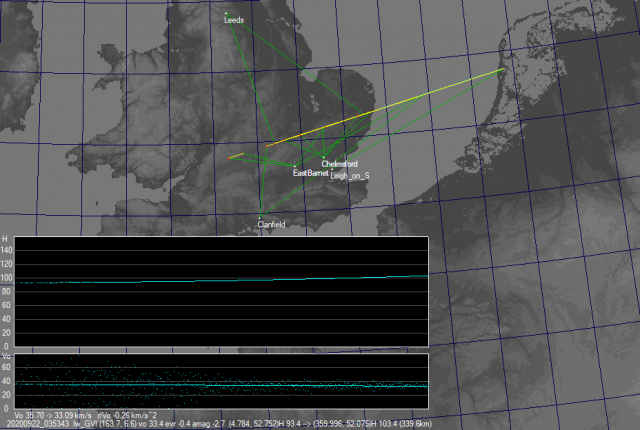
The mini-plots show it increasing in altitude and slightly decelerating as it crossed over England. (Its absolute mag. of around -2.7 is the magnitude of a meteor at a standardised altitude of 100 km in the observer’s zenith).
Our radiant plot, given below, suggests it might have been a Daytime gamma Virginid (GVI), although that shower is not in the Established List in the IAU MDC.
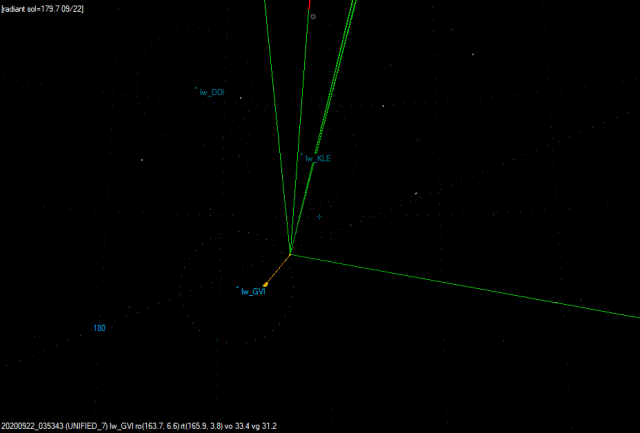
We obtained a well-defined solar system orbit for the body. The elements have some similarities with a GVI but not fully, perhaps it was a sporadic object. The orbit diagram is here
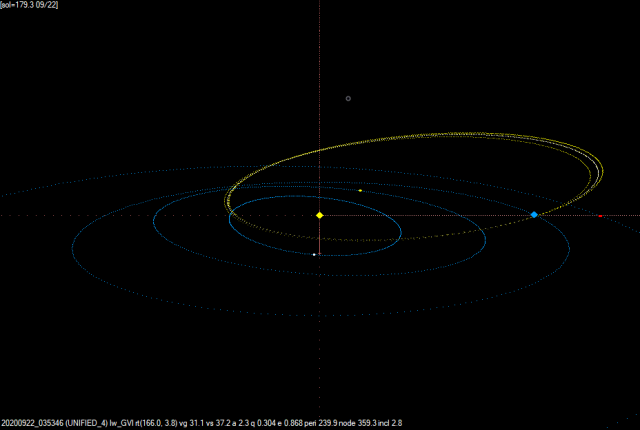
Analysis of the end phase suggests the object had climbed to 110 km altitude and was slightly accelerating as it faded beyond detection of our video cameras (when it was moving towards the Severn Estuary). At this altitude the meteor would be leaving the ablation layer. So, we surmise that it had a close encounter with Earth and has lived to tell the tale!
Such events aren’t uncommon and at the 2018 Winchester Weekend I described the Earth grazer of 2016 July 16 which took 10s to travel 470 km from the North East to the South coast.
Clear skies,
Alex.
 Alex PrattParticipant
Alex PrattParticipantAs the first interview got underway I wondered if the team had made their discovery using a Sky-Watcher Infinity 76 ‘scope…? 🙂
Alex.
 Alex PrattParticipant
Alex PrattParticipantThanks Bill.
Looking at the weather forecast it might be more profitable to listen to your radio system or tune in to the Radio Detection Livestream.
Cheers,
Alex.
 Alex PrattParticipant
Alex PrattParticipantHi Jeremy,
It wouldn’t be possible to process such a large volume of unrecorded VS observations without the tenacious commitment of these Section members. I’m aware of cases where valuable observations have been lost after members passed away, e.g. by a house clearance or by wiping their computer drives. Thankfully, Melvyn’s family gave us full access to his extensive hoard.
As I mentioned in VSS Circular 180, the BAA Memoirs contain some useful VS data, but perhaps like in the English Mechanic not all salient information is to hand. Yes, they are certainly worthwhile and rewarding projects to search for old observations and add them to the Association’s archives and databases.
I’ve promised Roger I’ll write an update for the December VSS Circular.
Alex.
 Alex PrattParticipant
Alex PrattParticipantHi David,
Here’s an online article with pics taken from Whitley Bay…
I had to laugh when they wrote “Dr Robert Massey, from the Royal Astrological Society…” 🙂
Clear skies,
Alex.
 Alex PrattParticipant
Alex PrattParticipantHi John,
Have a look at
http://www.theastronomer.org/post/MeteorDiary/
https://www.imo.net/files/meteor-shower/cal2020.pdf
http://www.astro.amu.edu.pl/~jopek/MDC2007/
Cheers,
Alex.
 Alex PrattParticipant
Alex PrattParticipantHi Dominic,
As William commented, my lenses also have a grub screw to secure the focus of the lens. As you’ll have experienced, focussing is quite a delicate operation with most video camera/lens combinations.
My Leeds_SE camera sometimes drifts out of focus during the seasons. Often this is an acceptable amount of soft focus, then just as I’m about to shin up the drainpipe it moves back into hard focus again.
I haven’t tried the masking tape technique. I suspected its expansion and contraction might cause some focus shift. I suppose it depends on the tightness of the rotating bezel.
Cheers,
Alex.
 Alex PrattParticipant
Alex PrattParticipantThanks Jeremy,
I can confirm it plays very well from there and Members will find the presentation and discussion most interesting.
Clear skies,
Alex/
 Alex PrattParticipant
Alex PrattParticipantUnlike previous weeks, this evening I cannot view the talk (Jeremy’s) on the YouTube feed. It is working OK for Zoom users. Is it working OK for other YouTube watchers?
Alex.
 Alex PrattParticipant
Alex PrattParticipantHi Ray,
I found that instead of directly clicking on an option I did right-click and selected Open a new window. This solved my Groundhog Day login problem.
Cheers,
Alex.
 Alex PrattParticipant
Alex PrattParticipantI tried to edit my latest entry on my Member’s Page to update the image. On clicking ‘Edit this observation’ – ‘Remove’ I got the error message
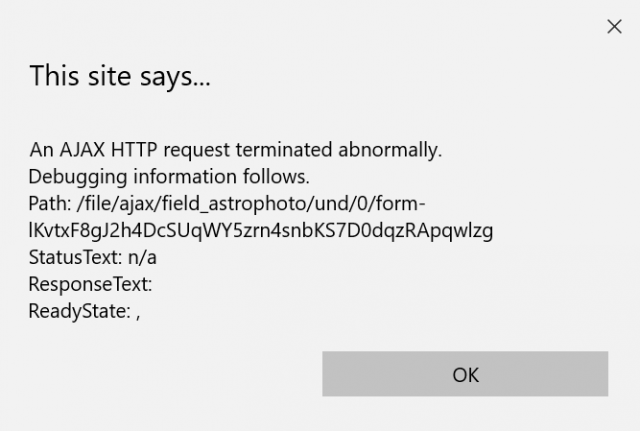
Clear skies,
Alex.
 Alex PrattParticipant
Alex PrattParticipantHi Pauline,
Just click on the ellipsis and you’ll see all names displayed.
Clear skies,
Alex.
 Alex PrattParticipantGordon was most helpful when I researched HMNAO’s Occultation Machine. I occasionally ‘phoned him to update him on current developments in occultation astronomy and the promise of Gaia’s astrometry.Gordon’s autobiography was published in JOA 2016-4
Alex PrattParticipantGordon was most helpful when I researched HMNAO’s Occultation Machine. I occasionally ‘phoned him to update him on current developments in occultation astronomy and the promise of Gaia’s astrometry.Gordon’s autobiography was published in JOA 2016-4An obituary (written by Tim Haymes) will appear in the Journal.
Alex.
-
AuthorPosts
